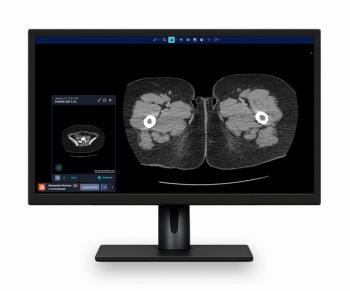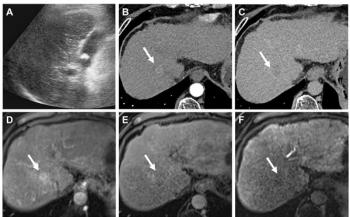
Electromagnetic positioning boosts RFA
A “mini-global positioning system” could improve the conventional guidance of radiofrequency ablation and the safety of the image-guided interventional procedures.
A "mini-global positioning system" could improve the conventional guidance of radiofrequency ablation and the safety of the image-guided interventional procedures.
Electromagnetic tracking of catheters and needles used in biopsy or thermal ablation has been proposed in the past, but the new technology departs from fluoroscopy-based concepts. A small field generator near the patient tracks the location of tiny electromagnetic sensors placed on single and cluster RFA probes. The sensors' signals then go to a computer, where special software provides real-time location of the probes in correlation with preprocedural imaging.
The technology "glues" together CT, PET, or MR imaging data sets with the electromagnetic mapping of the region of interest, allowing accurate navigation within the patient, said coauthor Dr. Bradford J. Wood, senior clinical investigator at the National Institutes of Health. He described the approach at the 2004 RSNA meeting.
Wood and colleagues tested the accuracy of the device using phantom models. They performed semi-automatic registration of the magnetic space to preprocedural image coordinates provided by CT and gauged the margin of error between the probe tip and the target between insertions. They found the electromagnetic tracking of RFA probes allowed for multimodality navigation within a 1.6-mm range of error. Recent tests on animals and three patients confirmed previous results.
According to Wood, the mini-GPS provides accurate navigation coordinates not only at the time of placing the needles but also when the interventionalist needs to reposition the probes. This can be particularly helpful when a tumor cannot be completely visualized by conventional imaging, or, as often seen with ultrasound guidance, the tumor "'gasses out" when it's being cooked.
Electromagnetic tracking also allows accurate multimodality navigation, adding 3D information that otherwise would not be available during RFA. Accurate probe placement or repositioning reduces the procedure's time and radiation exposure (when intervention takes place under CT guidance), and it has the potential to improve patient outcomes, Wood said.
"Whereas once catheters, needles, and guidewires were followed with x-ray, ultrasound, or CT, now they can be followed with multiple modalities and updated in real-time without actually exposing the patient to radiation," Wood said.
Electromagnetic tracking is not intended to replace current guidance technologies but to enhance and facilitate procedures. It can add further options for patients who may react negatively to contrast agents.
"This just adds more meaning to the term 'image-guided' for image-guided therapy," he said.
For more information from the Diagnostic Imaging archives:
Newsletter
Stay at the forefront of radiology with the Diagnostic Imaging newsletter, delivering the latest news, clinical insights, and imaging advancements for today’s radiologists.




























